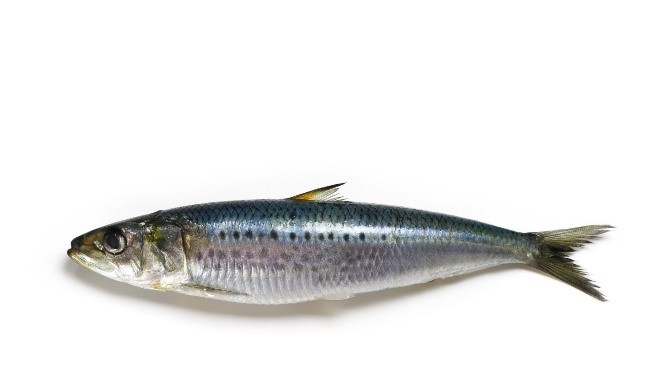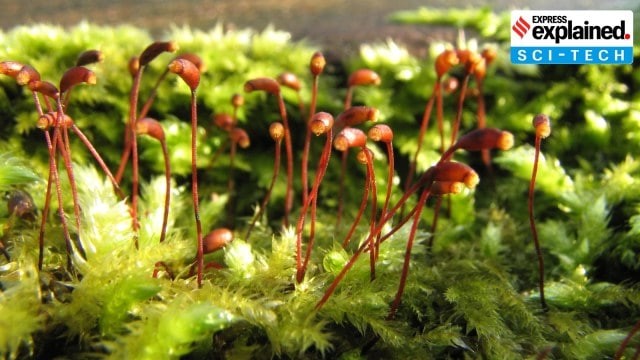Description

Disclaimer: Copyright infringement not intended.
Context
- Thousands of sardine fish have been surfacing near a beach in Goa for the past few days.
- Experts said it's a "rare" phenomenon known as 'sardine run'.
Sardines
- Sardines are small, oily fish belonging to the herring family (Clupeidae), and they are found in abundance in various oceans around the world.
Species and Distribution:
- Sardines encompass various species, such as the European pilchard (Sardina pilchardus) and the Pacific sardine (Sardinops sagax).
- They inhabit both cold and warm waters and are often found in large schools.
Nutritional Value:
- Sardines are a highly nutritious fish, rich in omega-3 fatty acids, protein, vitamin D, and calcium.
- They are considered a healthy addition to the diet.

Culinary Uses:
- Sardines are versatile in the kitchen and can be enjoyed fresh, canned, or smoked.
- They are commonly used in salads, sandwiches, and various Mediterranean dishes.
Sustainability:
- Sardines are known for their sustainability as they are abundant and reproduce rapidly.
- They play a crucial role in marine ecosystems, serving as a primary food source for larger predatory fish.
Health Benefits:
- Regular consumption of sardines is associated with various health benefits, including cardiovascular health, improved bone density, and brain function, owing to their rich nutritional profile.
Economic Importance:
- Sardines hold economic importance for many coastal communities involved in fishing and processing industries. They are a staple in the fisheries sector and contribute significantly to global seafood markets.
Cultural Significance:
- Sardines often have cultural significance in regions where they are consumed. Festivals, such as the Feast of San Juan in Spain, celebrate the abundance of sardines and their role in local cuisine.
Conservation Concerns:
- While sardines are generally considered a sustainable seafood choice, overfishing and environmental changes can impact their populations.
- Responsible fishing practices and conservation efforts are crucial to maintain their ecological balance.
Global Demand:
- The global demand for sardines has increased due to their nutritional benefits and versatility.
- Canning and preservation methods have made sardines accessible worldwide, contributing to their popularity.
Fisheries Management:
- Many regions have implemented fisheries management measures to ensure the sustainable harvesting of sardines.
- These measures include catch quotas, seasonal restrictions, and monitoring to prevent overexploitation.
Sardine Run
- The "sardine run" refers to a spectacular natural phenomenon that occurs annually along the eastern coast of South Africa, particularly in the waters of the Indian Ocean.
- This event involves the mass migration of sardines (small, silvery fish) along the coastline, attracting a wide array of marine predators and creating a feeding frenzy. Here are key aspects of the sardine run:
Timing and Location:
- The sardine run typically occurs during the Southern Hemisphere's winter months, from May to July. This is when large shoals of sardines move northward along the eastern coast of South Africa, from the Eastern Cape to KwaZulu-Natal.
Magnitude of Migration:
- The migration involves millions of sardines forming dense, swirling shoals that can stretch for several kilometers along the coastline. The sheer size of the sardine run makes it one of the most significant marine events in the world.
Predator Interaction:
- The sardine run attracts an impressive array of marine predators, creating a feeding frenzy. Common predators include dolphins, sharks (such as the copper shark and the common dolphin), game fish, seals, and various species of seabirds.
Birds and Marine Mammals:
- Seabirds, such as gannets, shearwaters, and terns, dive into the water to feed on the sardines from above. Dolphins and sharks coordinate underwater to round up and feed on the sardine shoals, creating a dynamic and cooperative hunting behavior.

Ecological Significance:
- The sardine run is a critical event in the marine ecosystem, as it provides a concentrated and nutrient-rich food source for a diverse range of predators. This abundance of marine life contributes to the overall health and biodiversity of the ocean ecosystem.
Environmental Factors:
- The exact triggers for the sardine run are not fully understood, but it is believed to be influenced by various environmental factors, including water temperature, currents, and the availability of plankton, which is a primary food source for sardines.
The sardine run is a remarkable and dynamic example of nature's interconnectedness, showcasing the intricate relationships between different species in the marine environment. While it is a celebrated natural event, ongoing conservation efforts are essential to ensure the long-term sustainability of the marine ecosystem and the species involved in the sardine run.
|
PRACTICE QUESTION
Question:
Which of the following best describes the annual marine phenomenon known as the "sardine run"?
a) A massive migration of sardines along the coast of South America, attracting predators and creating a feeding frenzy.
b) An annual breeding event of sardines in the Mediterranean Sea, crucial for sustaining local fisheries.
c) A significant oceanographic event causing the mass migration of sardines from the Atlantic to the Indian Ocean.
d) A spectacular natural phenomenon involving the mass migration of sardines along the eastern coast of South Africa, attracting marine predators.
Answer: d) A spectacular natural phenomenon involving the mass migration of sardines along the eastern coast of South Africa, attracting marine predators.
|












